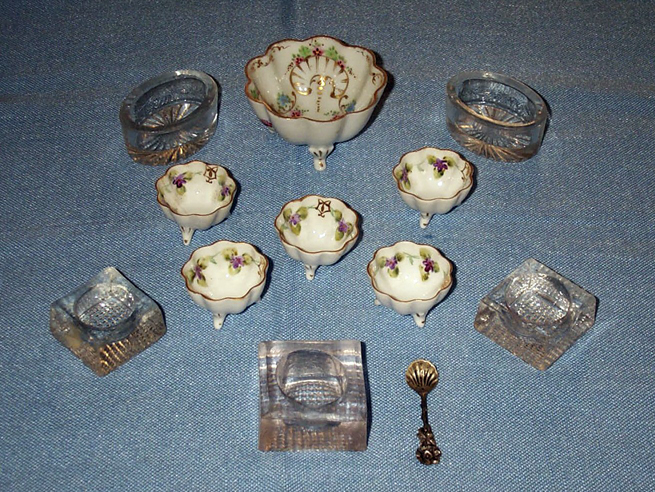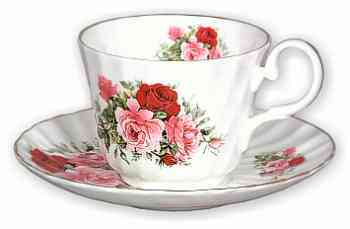 Today we pass the salt shaker at the table but until World War II, most people used salt cellars. A salt cellar, or salt dip, is simply a small, open bowl that holds salt. Large ones were passed around the table with a little spoon. Individual salts were used at some tables too.
Today we pass the salt shaker at the table but until World War II, most people used salt cellars. A salt cellar, or salt dip, is simply a small, open bowl that holds salt. Large ones were passed around the table with a little spoon. Individual salts were used at some tables too.
Did you know that the first tax of any kind was a salt tax? It was levied by a Chinese emperor. In Greece and Rome, slaves were traded for salt. Salt has always been a precious commodity. (You know this is still true today if you buy any of the designer sea salts available.)
Salt used to be sold in cones or blocks. It was up to the housewife to slice off a chunk to use. At antique stores, you can still sometimes see salt cone holders and tools made for cutting salt. In the early part of the 20th century, magnesium carbonate, a moisture absorbing agent, was added to salt. It was no longer sold in cones but finely ground.
Morton salt was the first company to produce iodized salt. The iodine prevented goiters which apparently was a big health concern at the time. They also came up with the familiar round canister with its little spout way back in 1911. You must have seen their slogan a million times, “When it rains, it pours.”
Today I like to use my salt cellars at the tea table. They are so much more elegant than salt shakers. And who can ever resist little spoons. Although I’ll tell you a secret, I always feel a bit hurt when anyone needs to use salt on food I’ve prepared. It implies that I haven’t seasoned things well enough. I’m peculiar that way. :)




